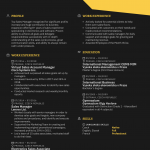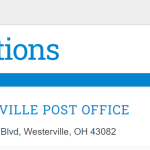How to Conduct Structured Employment Interviews
Structured Employment Interviews improve the agreement among interviewers when evaluating a candidate. They are used in recruiting, screening, and selection processes, and they can be conducted by two or more interviewers at the same time. They also increase the accuracy of the interviewer’s evaluation. There is little evidence that interviews reduce turnover, but they are likely to increase performance.
Structured interviews increase interviewers’ agreement on their overall evaluations
Structured Employment Interviews can help employers improve the accuracy and reliability of their assessment of job applicants. They can also be combined with skills testing to help reduce the time it takes to hire a candidate. Using a structured interview process can help employers identify which applicants are most likely to be successful.
Structured Employment Interviews also help organizations comply with legal standards. Federal anti-discrimination laws place strict limits on how organizations select candidates. They seek to limit the “disparate impact,” which occurs when a selection process disproportionately screens out applicants based on their race, religion, sex, or national origin. By introducing a structured interview process, employers can ensure compliance with these requirements and avoid costly legal challenges.
Using structured interviews increases the odds of building diverse teams. A structured interview process reduces the chance of hiring people who resemble the company founder. Instead, structured interviews focus on hiring the most qualified candidate for the job, based on responses to probing questions. As a result, the pool of candidates is naturally expanded. Using structured interviews will help employers increase their overall agreement on their evaluations of applicants.
Structured interviews can increase interviewers’ agreement on their overall evaluation, particularly when complex work is involved. This process allows interviewers to rate each applicant separately, and the panel can discuss differences in scoring. Although structured interviews may reduce the number of questions asked, structured interviews improve agreement between interviewers and increase the validity of their evaluations. In addition, structured interviews reduce the number of candidates who receive two or more interviewers’ scores that are significantly different.
Structured interviews are an effective method of vetting job candidates. They use a standardized set of questions to assess both soft and hard skills. These questions are typically generated prior to the interview. Furthermore, they are easier to compare than unstructured interviews because respondents are asked similar questions.
Despite these advantages, structured interviews may not be the only effective hiring strategy. Using structured interviewing techniques can help companies improve their recruitment practices, improve their hiring practices, and promote diversity and equity.
They are considered best practice
When conducting an interview, there are several things to remember. First of all, you want the interview to be free of distractions. The candidate should feel that you are giving your full attention. If possible, try not to ask about their personal life. Instead, ask questions that relate to the knowledge or skill requirements of the job. Secondly, ask about the candidate’s professional associations and affiliations, but don’t ask about their religion or political affiliation. Finally, ask the candidate his or her age and whether they have any legal documentation that proves they are a legal adult.
The interview process will enable the hiring manager to assess the candidate’s readiness and interest for the job. In addition, this process will allow the candidate to ask questions and clarify any misconceptions they have about the position or company. It will also give the candidate an opportunity to learn more about the company, its policies, and working environment.
In order to avoid such situations, interviewers must avoid making snap judgments based on the first impression they have of the candidate. For example, they may judge an applicant’s ability to work hard or whether they can handle the pressure of a job. A bad first impression could lead them to dismiss the candidate. Therefore, it is important to prepare probing questions. Also, be careful not to ask questions that elicit yes-or-no answers. Nonverbal cues can also influence a person’s answer.
They are used for recruiting, screening, and selection
Companies use several different types of interviews to evaluate prospective employees. In addition to traditional screening, they may conduct a personal interview or group interviews in front of a panel. Both of these processes can be time-consuming and demanding for the recruiters and candidates. This is why companies should consider the candidate experience when designing their hiring process.
The purpose of screening employment interviews is to determine if they have the skills needed to do the job. These methods may include aptitude tests, psychometric tests, or technical tests, and are particularly useful for entry-level job hiring. Manually conducting assessments with large groups would be a nightmare, so automated assessment platforms have emerged that generate unique questions and integrate with modern recruiting software.
Some people argue that screening questions are easy to game. But the truth is that most people answer honestly. The screening process can help determine the integrity of a candidate. Falsified answers can be revealed through a review of the applicant’s resume. This process is also cost-effective. A combination of screening methods can ensure that the process of hiring is more efficient and less expensive. In addition, it can ensure that only the most qualified candidates advance to the next step in the process.
While an interview may seem like an inconvenient step, it can help you weed out unsuitable applicants. This process also saves time. By eliminating unnecessary interview questions, you can streamline the screening process. Whether you are hiring a full-time employee or looking for a temporary employee, it’s important to have a way to screen applicants.
In some cases, video interviews may be beneficial. A video interview helps a company determine whether a candidate is able to work remotely and has a good microphone. A video interview can also help you determine whether the candidate has the skills needed to perform the job. In most cases, an interview is the first step in the hiring process.
They can be conducted by two or more interviewers at the same time
Using two or more interviewers for an employment interview can reduce the chances of bias in hiring. Having two interviewers can also allow them to review each other’s notes after each interview and make sure the questions are answered truthfully. Furthermore, two or more interviewers can ask different questions and form their own impressions of the candidate. Team interviews also allow for the interviewers to ask questions that are relevant to the different departments of the company.
Using two or more interviewers is a good idea for longer interviews. You can get a better feel for each interviewer’s style and approach. If one interviewer is weak or hesitant to ask difficult questions, having a second person available to provide a second opinion will allow you to compare their answers. It also means that you have a chance to meet all of the interviewers, and the candidate gets to speak to each of them.
Another common way to conduct employment interviews is to use panel interviews. This type of interview involves more than one interviewer and is also cheaper. This interview method is also more efficient. Using a panel allows two or more interviewers to interview several candidates at a time.
Group interviews can be effective for testing interpersonal skills, communication, stress management, and teamwork. In addition to assessing candidate skills, group interviews allow interviewers to compare various candidates in the same environment. They also allow interviewers to assess candidates’ teamwork, which is crucial in customer service positions requiring large numbers of clients.
While conducting interviews, the process should be efficient and effective. You should aim to involve the maximum number of stakeholders, and avoid dragging the process out. In addition, the number of interviews should not exceed a few months. Excessively long interviews may be a red flag for an indecisive organization. So, try to keep in mind the following tips for conducting employment interviews with multiple interviewers.















